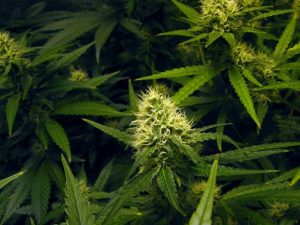Study: Medical Marijuana Laws Linked to More Older Worker Participation
We know that statewide medical marijuana legalization has been associated with numerous positive health outcomes. One of those was recently detailed in a new study just published by the Bureau of Economic Research.
The results, which stem from two decades of data, show in states where medical marijuana is legal and readily available, Americans over 50 have greater workforce participation. Is this link causative? The study participants offered compelling evidence to suggest just that.
Researchers with Johns Hopkins School of Public Health (Baltimore) and Temple University (Maryland) found that the health improvements experienced by both older men and women revealed increased participation in the labor market. In states with pro-marijuana laws there was a 9.4 percent increase in the probability of employment for Americans over the age of 50. There was also an increase in hours worked – 4.6 to 4.9 percent – in the number of weekly hours worked.
The results of this study help to belay the notion of marijuana users as being primarily young stoners using the drug solely for recreational purposes.
Although the exact prevalence of marijuana use among older adults isn’t known, there is evidence to suggest it is on the uptick – both for recreational and medicinal purposes.
For example, one survey by the International Association for Cannabinoid Medicines analyzing the therapeutic use of marijuana and derivative medicines revealed that of nearly 1,000 participants from more than 30 countries (including the U.S., Canada and France) that nearly 7 percent of cannabis users were between 61- and 75-years-old. In the Netherlands, nearly 40 percent of those prescribed the drug were between the ages of 61 and 93.
In some ways, this makes a lot of sense. After all, older people suffer on the whole from more ailments and have much higher levels of overall prescription use. It’s notable, though, for the fact that they are from the generation of “reefer madness,” when marijuana was painted in an extremely negative light as the source of numerous societal ills. So for them to be open to taking it at all is remarkable.
It seems many of them are finding that relief from this herb, which has been used for its medicinal properties for centuries, is more effective and often less dangerous than powerful prescription opioids and other painkillers. Marijuana may be gentler on the system than these other drugs, which is of particular concern for patients who are frail and vulnerable.
A survey conducted of 1,500 readers of the New England Journal of Medicine said they agreed that medical marijuana could be legitimately used therapeutically for a 68-year-old woman suffering from metastatic breast cancer, fatigue, pain and severe nausea.
Numerous randomized clinical trials espouse the benefits of medical marijuana, but most don’t look specifically at older adults. This should be an important consideration moving forward, both for individual states considering legislative changes and for the federal government in weighing whether to legalize – or at least decriminalize – possession, use and small-scale sales of marijuana.
The older adult population is not only growing exponentially, but on the whole are a vulnerable group due to physiological changes and a high likelihood of adverse drug events and comorbidity. It’s important that doctors and scientists study these interactions more carefully, but the research that does exist tells us that marijuana is a preferable alternative to other drugs for a myriad of conditions.
The Los Angeles CANNABIS LAW Group represents growers, dispensaries, collectives, patients and those facing marijuana charges. Call us at 949-375-4734.
Additional Resources:
Study: Medical Marijuana Laws Associated With Greater Workforce Participation Among Older Americans, Oct. 6, 2016, By Paul Armentano, The Daily Chronic
More Blog Entries:
Diamond Logo on Marijuana Edibles in Colorado to Help Avoid Confusion, Oct. 25, 2016, Medical Marijuana Lawyer Blog
 Cannabis Law Group's Medical Marijuana Legal Blog
Cannabis Law Group's Medical Marijuana Legal Blog




